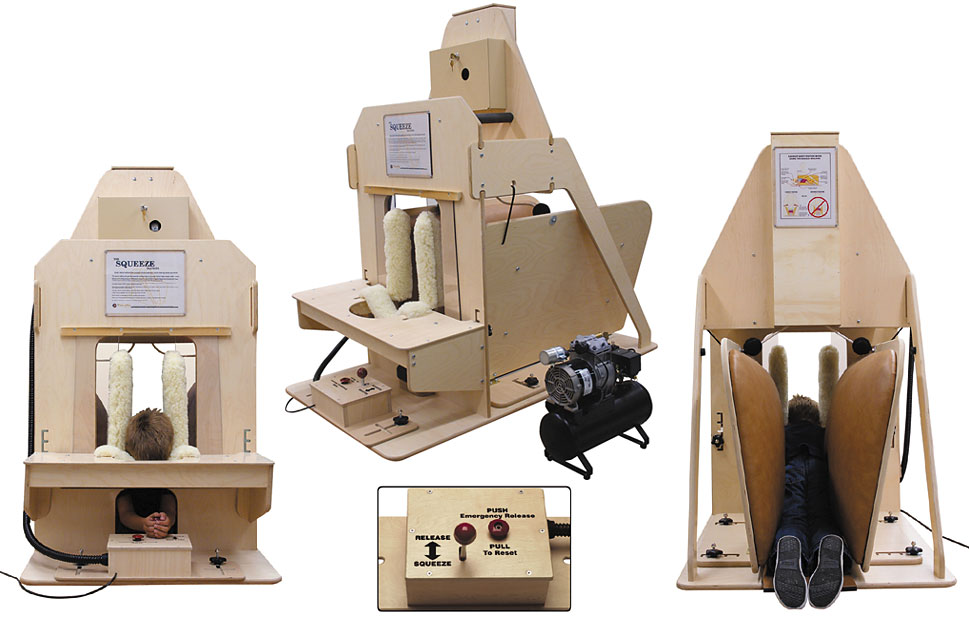Benefits of Deep Pressure Input
When we put together the Sensory Room at the main Kalix building, we tried to accommodate all areas of sensory integration to create a relaxing environment that could fulfill a variety of needs. So far the room has been a success, but we noticed that we were missing products for pressure seekers. Recently, we added a massage chair and weighted items for more accessible deep pressure input alongside the Squeeze Machine.



Research has shown therapeutic benefits of deep pressure input among people with conditions like ASD, Alzheimer’s and Dementia, and varying developmental disabilities.
The article, The Science Behind Tjacket, by Associate Professor Kenneth Poon eloquently summarizes the calming effect of deep touch pressure:
“Deep touch pressure refers to a form of tactile sensory input which is often provided by firm holding, firm stroking, cuddling, hugging, and squeezing. Deep touch pressure acts as a calming or focusing agent to increase activity in the parasympathetic division, and lower activity in the sympathetic division of the Autonomic Nervous System (ANS) (Hsin-Yung Chen et. al., 2011). This opposite movement of activity in the two divisions together work to amongst other things, increase endorphin levels (happy hormones) and decrease heart rate and blood pressure (indicators of anxiety and stress). Deep touch pressure also causes the release of both serotonin and dopamine in the brain. These are “happy” neurotransmitters and produce a feeling of calm within our nervous system.
Deep touch pressure’s role as a calming agent benefits individuals suffering from chronic stress, anxiety pain and unrest (for ex: individuals with developmental disabilities, dementia and other special needs). It also benefits individuals with high levels of anxiety (anxiety disorders) or arousal. By helping to calm these individuals, deep touch pressure improves their ability to cope with stress and anxieties, giving them more control over their lives, hence allowing for a better quality of life. For individuals with proprioceptive, vestibular and tactile sensory seeking behaviours, deep touch pressure gives them the sensory input they require and crave in order for the body to function effectively with the environment.”
For more information about the research behind deep pressure touch visit: http://www.mytjacket.com/the-science-behind-it.html
